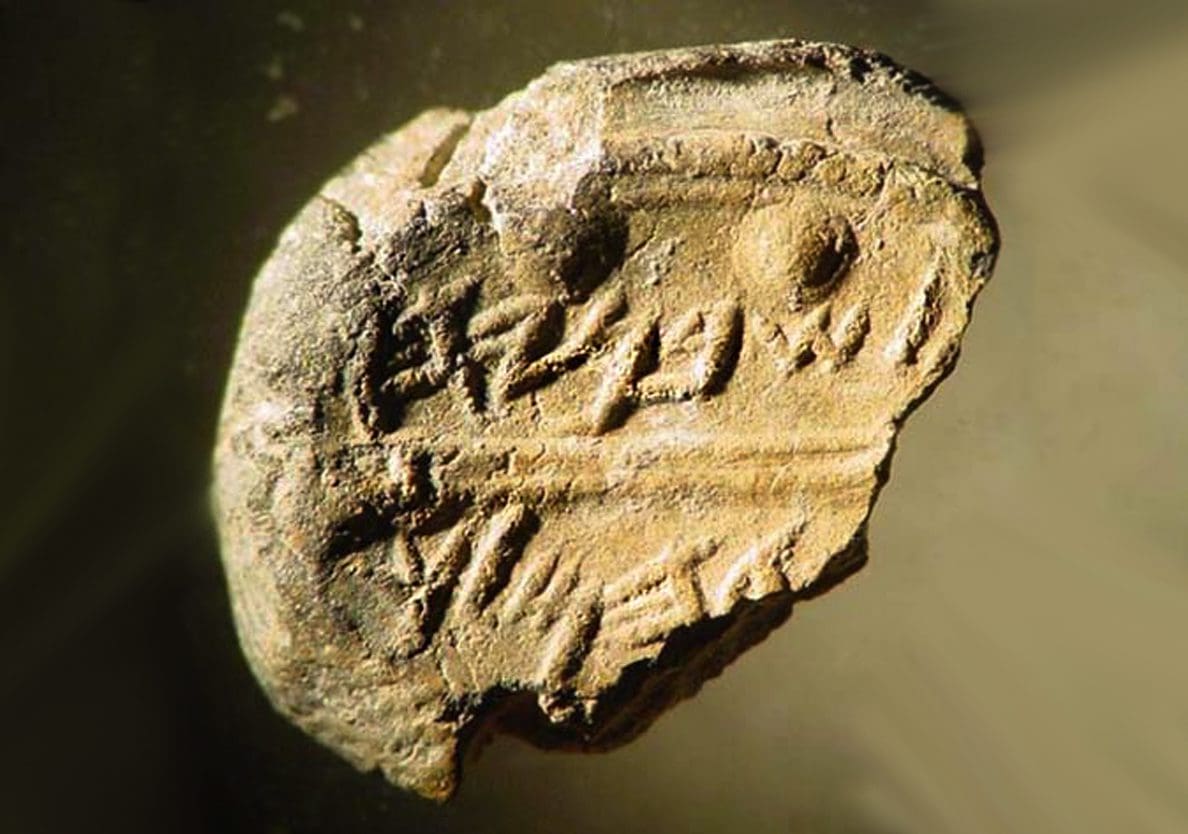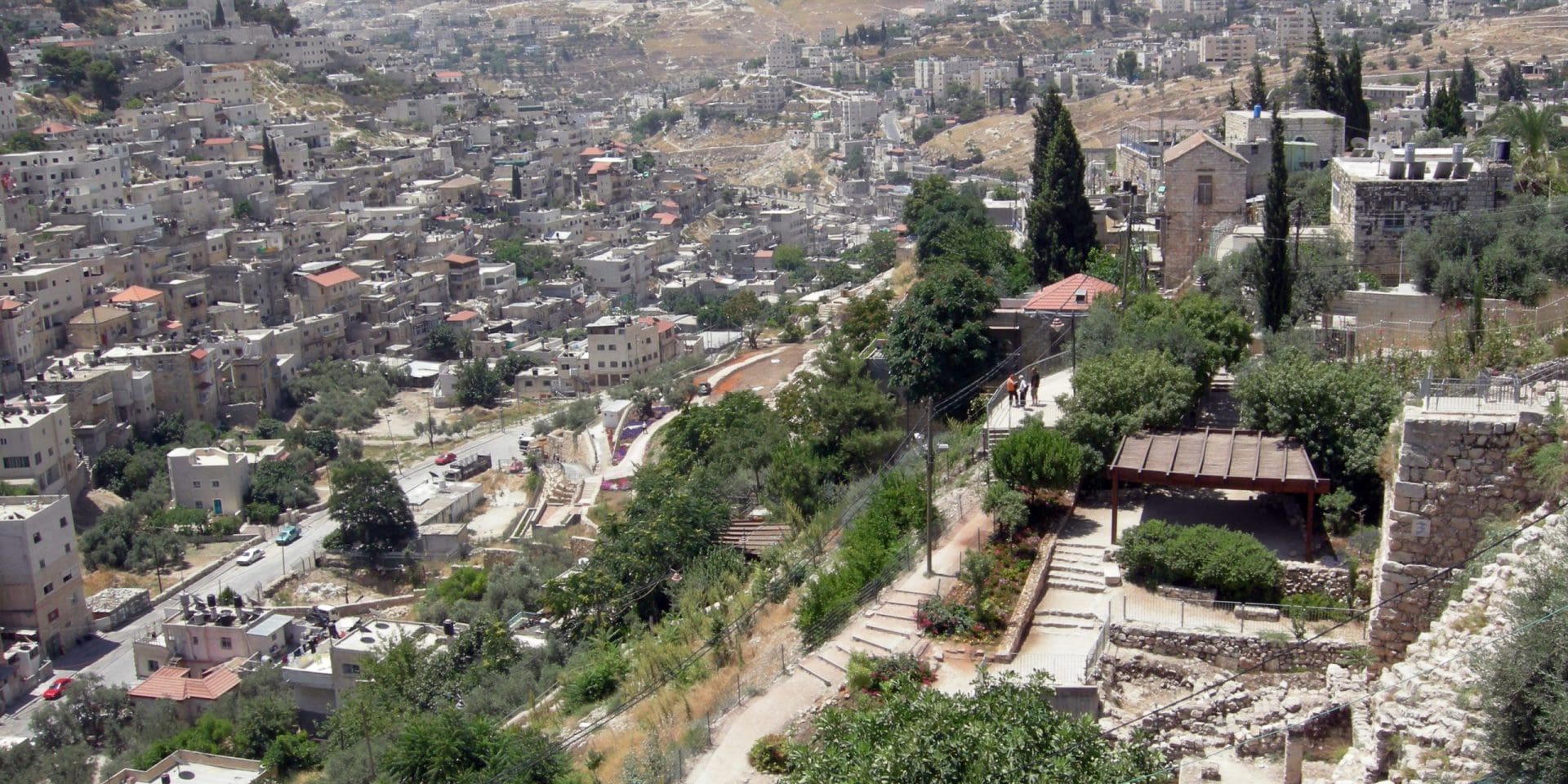In 1870, French archaeologist Charles Clermont-Ganneau, while surveying ancient tombs in the Kidron Valley (modern day Silwan) noticed a partially destroyed tomb high up in the cliff. As with other tombs in the area, this one had been assimilated and repurposed into a residence, though it did still retain part of a Hebrew inscription above the door. But because Ganneau was unable to decipher it he cut out the rock and sent it to the British Museum in London where it would remain untranslated for over eighty years.
Finally, in 1953, Jewish epigraphist Nahman Avigad was able to decipher the text. Though part of the inscription was missing, what could be recovered was very significant. It reads: “This is [the sepulchre of…] -yahu who is over the house. There is no silver and gold here but [his bones] and the bones of his slave-wife with him. Cursed be the man who will open this.”[1] As Dr. Randall Price points out in his Handbook of Biblical Archaeology, “The description ‘over the house’ indicated a steward, but because part of the crucial name was missing and the part that was in the inscription was a common ending for many names” (namely -yahu) no definite identification could be made.[2] Nevertheless, Avigad was convinced that the name on the inscription originally read “Shebnayahu”, and was none other than Shebna, the royal steward over King Hezekiah’s palace whom Isaiah makes mention (Isaiah 22:15ff., 36, 37; See also 2 Kings 18-19).

At least two lines of evidence led him to this conclusion. First, the timing is right. By comparing the letters and writing styles of the tomb inscription with the writing in Hezekiah’s tunnel he discovered that they were both etched during the reign of Hezekiah. Second, Shebna’s name fits perfectly into the missing area of the inscription, better than any alternative names ending in -yahu that he tried. But is there any evidence that Shebna’s full name was Shebnayahu? In fact, there is. Two clay seals (bullae), firmly dated to Hezekiah’s reign, have been discovered. Both were clearly inscribed with the same signet and read: “Belonging to Shebnayahu servant of the king.”[3],[4]


It seems highly likely then that this tomb belonged to the very same Shebna mentioned in Isaiah. While this important discovery helps to verify the accuracy of the Biblical record, it also brings with it a bit of a conundrum. That’s because according to Isaiah’s record, God punished Shebna because he built this “excessively extravagant tomb for himself apart from his family tomb. [Apparently, s]uch a building implied a status greater than deserved and therefore was an overt demonstration of prideful arrogance in the sight of God and the nation of Judah.”[5] For this, God demoted him from royal steward to scribe and declared that he would never get to use the tomb because he would die in a far-off land. But how could this prophecy be fulfilled if his tomb bearing his inscription has been found? One possibility is that Shebna repented, and God relented. But more than likely, Shebna was indeed exiled to a foreign land never to return, meaning he never occupied his grand tomb. It could have just as easily become someone else’s sepulchre or even remained empty.[6]
Since the tomb had already been repurposed into a home by the time Ganneau found it, we have no way of knowing if there were bones in it or not. But one thing we do know is that no archaeological discovery has ever truly contradicted the Biblical record. On the contrary, as we’ve witnessed with the discovery of Shebna’s tomb, archaeology consistently confirms what we’re told in the Bible.

Ryan Hembree is a daily co-host, speaker, and writer of Bible Discovery. He also hosts a YouTube channel that shows the unity of the Bible and how science and Scripture fit together. Ryan also has an honorary Masters of Ministry in Creation Science from Phoenix University of Theology.
[1] Cited from Randall Price, Zondervan Handbook of Biblical Archaeology, 2017, P.161.
[2] Randall Price, Zondervan Handbook of Biblical Archaeology, 2017, P.161-162.
[3] Randall Price, Zondervan Handbook of Biblical Archaeology, 2017, P.162.
[4] Has The Tomb of Shebna Been Discovered? https://biblereadingarcheology.com/2016/12/26/has-the-tomb-of-shebna-been-discovered/
[5] Randall Price, Zondervan Handbook of Biblical Archaeology, 2017, P.161.
[6] Has The Tomb of Shebna Been Discovered? https://biblereadingarcheology.com/2016/12/26/has-the-tomb-of-shebna-been-discovered/






